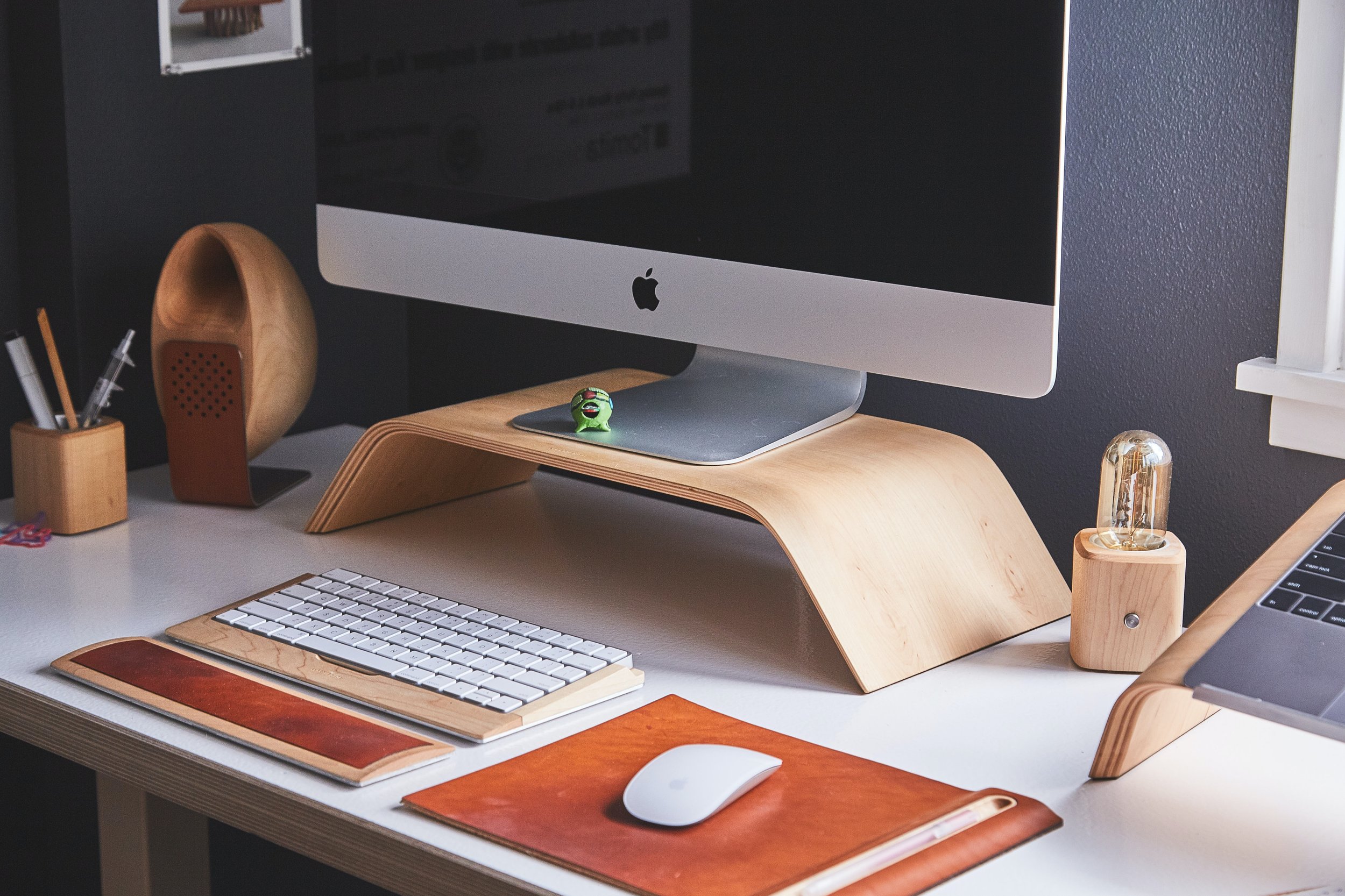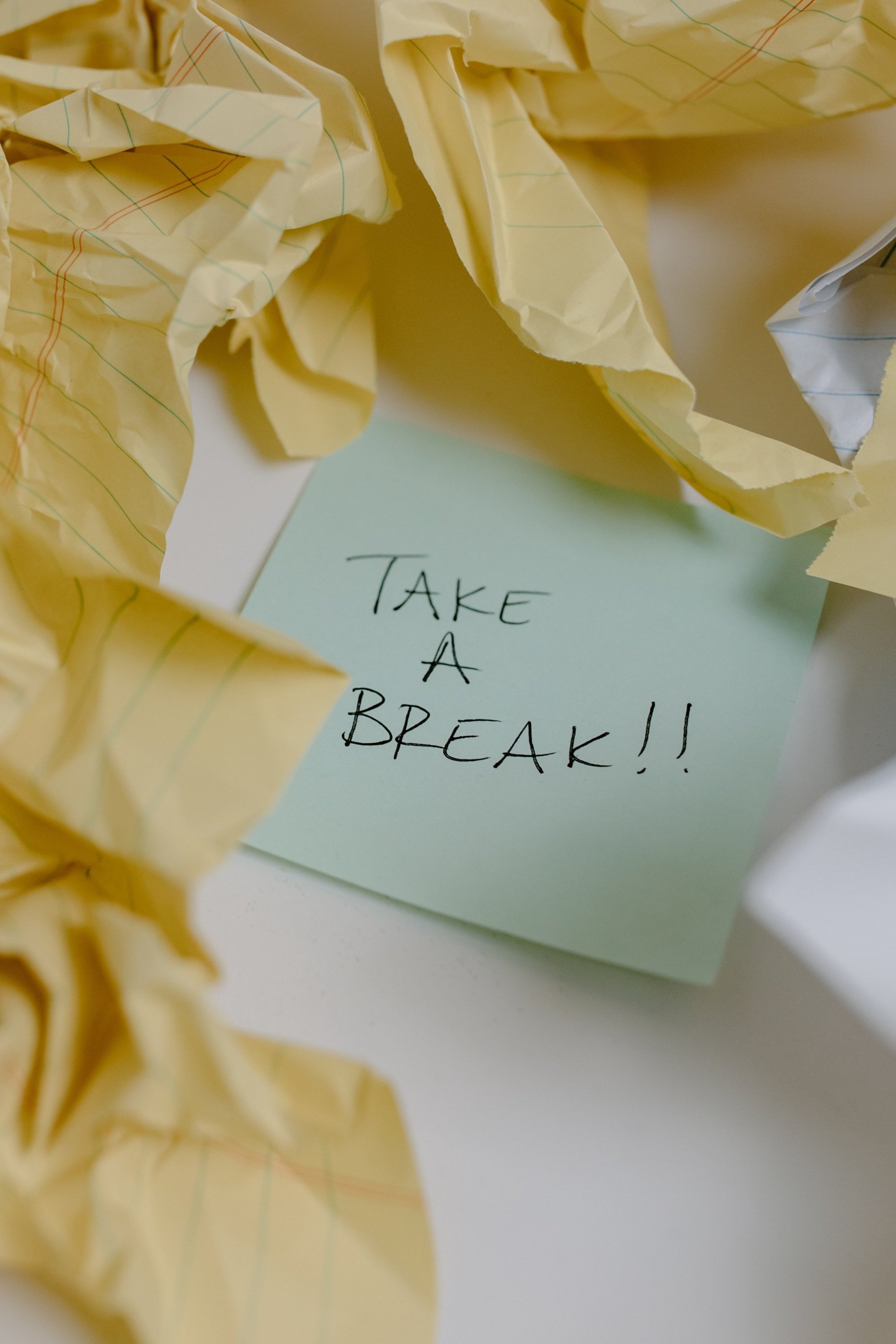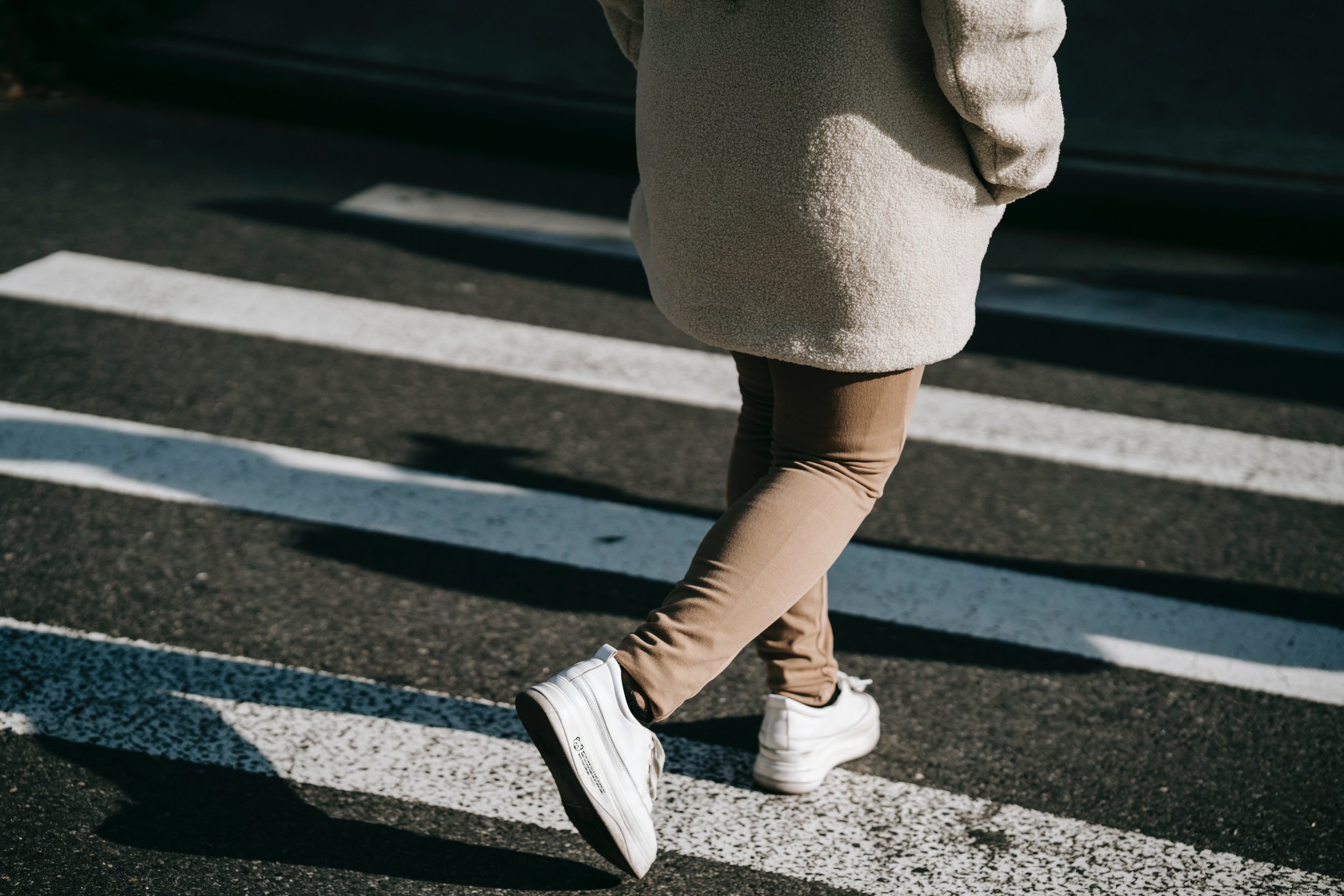Working from home can be both a blessing and a curse, especially for artists, writers, and creatives. On one hand, you have the freedom to work in your own space, wear whatever you want, and avoid the dreaded daily commute. On the other hand, it can be challenging to stay focused and motivated when you're surrounded by distractions, such as social media, household chores, and the temptation to take a nap (keep reading to see why napping isn’t totally bad).
As a creative professional who’s been working from home for years, I've learned a thing or two about productivity; and that’s coming from someone with severe ADHD. In this guide, I'll share 5 of my best tips for staying on task, managing your time, and avoiding burnout. Whether you're a seasoned pro or a newbie to the WFH lifestyle, I hope you'll find some helpful advice here!
Eat the frog first
"Eat the frog first thing in the morning" is a productivity and time management strategy that encourages tackling the most challenging or unpleasant task at the beginning of the day. I learned about this from the head of HR during my time as a producer at Beachbody but the phrase is often attributed to Mark Twain, who famously said…
"Eat a live frog first thing in the morning and nothing worse will happen to you the rest of the day."
In this context, the "frog" represents the most difficult, important, or daunting task on your to-do list. By completing this task early in the day, you can gain a sense of accomplishment and momentum, as well as minimize procrastination and the potential for the task to weigh on your mind throughout the day. Similar reasoning to why many top performers harp on how important it is to make your bed first thing in the morning. By winning small tasks, it creates an avalanche of completing tasks no matter how large or daunting.
The idea behind this approach is that once the most challenging task is out of the way, the remaining tasks may feel easier or less daunting in comparison. It can also help prevent the task from being pushed aside or delayed due to distractions or a lack of energy later in the day (guilty).
"Eating the frog" emphasizes the importance of prioritizing and taking action on tasks that have a significant impact on productivity and progress, even if they are initially uncomfortable or require extra effort. By facing challenges head-on and completing the most difficult tasks early, individuals can enhance their productivity, reduce stress, and maintain a sense of control over their workload.
Create a Dedicated Workspace
One of the biggest challenges of working from home is separating your work life from your personal life. When your workspace is also your living space, it can be difficult to switch off and relax. That's why it's important to create a dedicated workspace that's just for work. Whether it's a spare room, a corner of your bedroom, or a desk in the living room, make sure you have a designated area where you can focus on your tasks. Ideally, your workspace should be quiet, free from distractions, and well-lit. You should also make sure you have all the equipment and supplies you need, such as a comfortable chair, a sturdy desk, a reliable computer, and any art supplies you require. Creating a dedicated workspace can help you get into the right mindset for work and make it easier to switch off when you're done.
Having a dedicated workspace is essential for promoting increased creativity. According to a study by Sarris et al. (2018), a well-designed and organized workspace positively influences cognitive processes, including creative thinking. When individuals have a designated area for work, it helps create a mental boundary between work and personal life, allowing them to focus more effectively on creative tasks. Moreover, a dedicated workspace provides a sense of ownership and control, allowing individuals to customize their environment to suit their preferences and needs. This personalization can contribute to a sense of comfort and familiarity, which in turn can foster a conducive atmosphere for creative thinking and problem-solving.
In addition to promoting focus and concentration, a dedicated workspace can enhance creative inspiration. Research conducted by Hsin and Newman (2018) suggests that an aesthetically pleasing work environment can positively influence creativity. Decorative elements, such as artwork or plants, can provide visual stimulation and evoke positive emotions, which have been linked to enhanced creative thinking. Furthermore, a dedicated workspace can be designed to maximize exposure to natural light, which has been found to have a positive impact on cognitive functioning and creativity (Boubekri et al., 2014). Access to natural light can improve mood, energy levels, and overall well-being, thereby fostering a conducive environment for generating innovative ideas.
A dedicated workspace can also support the organization and storage of materials and resources, which is crucial for fostering creativity. According to Amabile and Pratt (2016), a well-organized workspace enables easy access to relevant information and materials, reducing cognitive load and freeing up mental resources for creative tasks. When materials and tools are readily available and organized, individuals can quickly retrieve and manipulate them, facilitating the generation and exploration of diverse ideas. Furthermore, a clutter-free workspace can reduce distractions and promote a sense of calm, allowing individuals to maintain focus and engage in deep, uninterrupted thinking, which is often vital for creative problem-solving.
This fosters a sense of professionalism and dedication to one's craft, leading to increased motivation and commitment to creative endeavors. According to Csikszentmihalyi (2014), individuals who are fully engaged and immersed in their work are more likely to experience a state of "flow," characterized by deep concentration, heightened focus, and heightened creativity. A dedicated workspace serves as a physical manifestation of this commitment, signaling to the individual the importance of their creative pursuits. This psychological association can enhance motivation and inspire individuals to invest time and effort into their work, ultimately leading to greater creative output and innovation.
Take a break when creativity and motivation are running low
Taking a break when creativity and motivation are running low is beneficial for several reasons. Firstly, breaks provide an opportunity for rest and rejuvenation. Continuous engagement in a task can lead to mental fatigue, diminishing cognitive resources needed for creative thinking. Stepping away from the task and giving yourself a break allows your mind to relax and recharge, leading to improved mental clarity and a fresh perspective when you return to the task. A problem that I encounter far too often is I get into my flow state (see above) and time flies by, I forget how long I’ve been working on the task or I haven’t drank water/eaten in hours which makes my productivity fall apart. Because I’m in this flow state I’m oblivious to why I’m feeling fatigued and try to push through, which ultimately results in frustration and negative self-talk about why I should be more productive. It’s a vicious cycle. I’ve found that by scheduling these breaks it helps me to avoid this issue. Some weeks I even have to schedule my meals otherwise I will completely forget!
Additionally, breaks can stimulate new ideas and enhance creativity. When you disengage from a task, your mind is freed from its current constraints, allowing for subconscious processing and the generation of novel connections. Research by Baird et al. (2012) suggests that taking breaks during demanding cognitive tasks promotes creative incubation, enabling individuals to make insightful connections and arrive at innovative solutions. In this way, breaks serve as a fertile ground for creative thinking by providing the space for new ideas to emerge.
When faced with a prolonged period of low motivation, persisting with the task can result in diminishing returns and decreased satisfaction. By taking a break, you create an opportunity to engage in activities that you find enjoyable or relaxing, which can reignite your motivation and enthusiasm. This break from the task can also foster a sense of autonomy and control over your work, improving intrinsic motivation (Deci & Ryan, 1985). Returning to the task with renewed motivation can lead to increased productivity and a higher quality of work.
Stick to a Schedule
Another challenge of working from home is staying on track with your tasks. When you don't have a boss or colleagues to hold you accountable, it can be tempting to procrastinate or get sidetracked by non-work-related activities. That's why it's important to stick to a schedule as much as possible. Whether you prefer to work regular hours or have a more flexible routine, make sure you set aside specific blocks of time for work, breaks, and personal activities. Try to stick to your schedule as much as possible, but don't beat yourself up if you need to make adjustments. The beauty of working from home is that you have more control over your time, so use it wisely.
A study conducted by the University of California, Santa Barbara found that establishing a daily routine and sticking to it can improve productivity and creativity. The study suggests that having a consistent schedule helps individuals develop habits and routines that allow them to focus on their work and avoid distractions. This can lead to increased creativity as individuals are able to eliminate unnecessary distractions and focus on their creative ideas.
Furthermore, a consistent schedule can also improve time management skills, which is essential for creativity. A review article published in the Journal of Creative Behavior found that time management is a key factor in enhancing creativity. The article suggests that individuals who are able to manage their time effectively are more likely to be productive and creative.
Another benefit of sticking to a schedule is that it helps individuals establish a sense of discipline and self-control, which can lead to increased creativity. A study published in the Journal of Personality and Social Psychology found that individuals who have a strong sense of self-control are more likely to engage in creative activities. By sticking to a schedule, individuals are able to develop a sense of discipline, self-control, and allocate time effectively, which can help them overcome creative blocks and push through difficult creative challenges.
Take Breaks and Move Your Body
One of the downsides of working from home is that you may be sitting for long periods of time without much movement. This can lead to stiffness, soreness, and a lack of energy. To combat this, it's important to take regular breaks and move your body throughout the day. Whether it's a quick stretch, a walk around the block, or a yoga session, make sure you're giving your body the movement it needs. Not only will this help you feel better physically, but it can also boost your productivity and creativity. Taking breaks can give your brain a chance to rest and recharge, which can lead to better ideas and more efficient work.
I remember seeing old people (sorry) walking and wondering what the big deal is. Then I started trying to hit 11k steps a day and this forced me to add walking in to the middle of my days schedule. Within a week I was raving about it to all of my friends. “These old people aint lying!”. Something about breaking away from my office after hours of meetings, deadlines, and schedules puts all of those things in perspective in relation to the larger picture. To my larger goals. To what’s important in life like being in nature and spending time with loved ones. It helped me to look at work as a problem to solve not as a prison that I must constantly keep up with.
Walking is an inexpensive, accessible and low-impact form of physical activity that has been shown to improve cognitive function and creativity. In a study published in the Journal of Experimental Psychology, participants who walked for 12 minutes showed increased creativity compared to those who sat. The authors suggest that walking may facilitate divergent thinking, which is a key component of creativity. Walking allows individuals to engage in free-flowing, non-judgmental thoughts that can lead to novel ideas and solutions.
Walking has also been shown to improve mood and reduce stress, both of which are important factors in enhancing creativity. A study published in the British Journal of Sports Medicine found that walking for just 30 minutes a day can significantly reduce symptoms of depression and anxiety. Stress and negative mood states have been shown to inhibit creativity, while positive moods can enhance it.
In addition to boosting creativity and mood, walking has also been linked to improved cognitive function and brain health. A review of studies published in the Journal of Alzheimer's Disease found that regular physical activity, including walking, can help reduce the risk of cognitive decline and dementia. Walking has also been shown to improve brain structure and function, including increased gray matter volume and improved connectivity between brain regions. These changes may contribute to improved cognitive function and creativity.
Walking provides an opportunity for individuals to engage with their environment and gain inspiration from nature and their surroundings. A study published in the Journal of Environmental Psychology found that spending time in nature can improve cognitive function and creativity. Walking outdoors allows individuals to take in the sights and sounds of nature, which can promote relaxation and stimulate creativity. Moreover, walking in new and unfamiliar environments can provide new perspectives and ideas that may not have been possible otherwise.
Walking is a simple and effective way to enhance creativity. By facilitating divergent thinking, improving mood, boosting cognitive function, and providing inspiration from the environment, walking can help individuals generate new ideas and solutions. Incorporating walking into one's daily routine can be a powerful tool for promoting creativity and overall well-being. For your next meeting or phone call sync, try suggesting a walk and talk or let them know that you’ll be taking the call from your walk, and you’ll see just how great they really are.
Conclusion
Working from home can be a wonderful opportunity for creative professionals, but it comes with its own set of challenges. By creating adopting an appetite for frogs in the morning (kidding), creating a dedicated workspace, taking breaks when needed, sticking to a schedule, and moving your body, you can stay productive and motivated without sacrificing your well-being. Remember, you are in control of your work life, so make the most of it!






